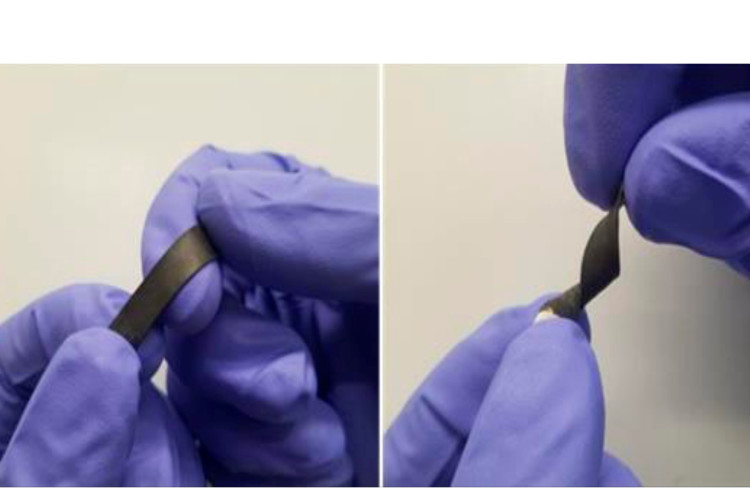The sensor, developed by the Materials Physics Group at the University of Sussex, exploits the properties of graphene. It can stretch up to 80 times higher strain than strain gauges currently on the market and show resistance changes 100-times higher than the most sensitive materials in research development.
The research team believe the sensors could bring new levels of sensitivity to systems monitoring buildings and bridges’ structural integrity, as well as to wearable tech measuring patients’ vital signs.
A paper in the journal Advanced Functional Materials, details the process for incorporating large quantities of graphene nanosheets into a PDMS (Polydimethylsiloxane) matrix in a structured, controllable fashion that results in excellent electromechanical properties.
The authors say the method has the potential to be extended to a wide range of two-dimensional layered materials and polymer matrices. The sensors deliver greatly enhanced conductivity at all measured loading levels with no apparent percolation threshold.
Commercial gauge devices suffer from relatively low sensitivity and strain range, with gauge factors ranging from 2-5 and maximum strains of 5% strain or less, resulting in the resistance increasing by less than 25% and preventing high-strain sensing required for bodily motion monitoring.
The new sensors are able to detect strains less than 0.1%, due to their higher gauge factor of ~20, and up to 80% strain, where the exponential response leads to the resistance changing by a factor of more than one million.

This allows both high-sensitivity low-strain sensing for pulse monitoring and high-strain measurement of movement as a result of the record resistance change.
Dr Sean Ogilvie, research fellow in materials physics, said: “Commercial strain sensors, typically based on metal foil gauges, favour accuracy and reliability over sensitivity and strain range. Nanocomposites are attractive candidates for next generation strain sensors due to their elasticity, but widespread adoption by industry has been hampered by non-linear effects such as hysteresis and creep due to the liquid like nature of polymers at the nanoscale which makes accurate, repeatable strain readouts an ongoing challenge.
“Our sensors settle into a repeated, predictable pattern which means that we can still extract an accurate read-out of strain despite these effects.”
The sensors are so sensitive that the application with the biggest potential is monitoring the human body, rather than buildings and bridges.
Alan Dalton, professor of experimental physics at the University of Sussex, said: “This promising technology may prove especially useful in established fields such as healthcare, sports performance monitoring and rapidly growing fields such as soft robotics.
“Our research has developed cheap, scalable health monitoring devices that can be calibrated to measure everything from human joint motion to vitals monitoring. Multiple devices could be used across the body of a patient, connected wirelessly and communicating together to provide a live, mobile health diagnostics at a fraction of the current cost.”
Got a story? Email news@theconstructionindex.co.uk



